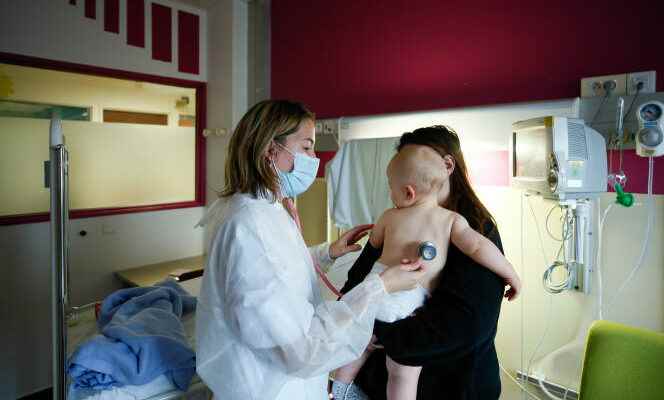For two and a half years, the Covid-19 pandemic has disrupted the classic seasonal cycle of other respiratory epidemics. That of bronchiolitis, which usually begins in mid-November, peaks in December and dies out in January, was six weeks ahead of schedule this year and already exceeds the levels of the last ten years, with around seven thousand visits to the emergency room in the last week of October.
If the indicators have dropped in the bulletin of Wednesday, November 16, Public Health France (SPF) urges caution: it could be a phenomenon following the school holidays and “it is likely that we will see a recovery this week, visible in next week’s epidemiological bulletin”, adds Sophie Vaux, from the infectious diseases department of SPF. To explain this extraordinary dynamic, many pediatricians put forward the notion of “immune debt”at the origin of lively debates between scientists.
The concept was introduced into the public debate by a text by French pediatricians published in Infectious Diseases Now in August 2021. According to these doctors, the barrier gestures linked to Covid-19 have limited the circulation of respiratory viruses and caused a “lack of immune stimulation” Population. This phenomenon, coupled with a lower vaccination coverage of children, “induced an immune debt which could have negative consequences when the pandemic is brought under control”. Put more simply: since 2020, fewer people have contracted respiratory viruses that cause bronchiolitis such as respiratory syncytial virus (RSV) or rhinoviruses; the population likely to catch them in 2022 is therefore larger than usual, which partly explains the levels observed today.
“Rebound effect”
This hypothesis of a lower immunization of the population against RSV “is interesting to watch”emphasizes Sophie Vaux, who prefers to talk about“rebound effect” coinciding with the lifting of measures against Covid-19. If there is a debt, in any case it does not concern newborns, who have simply never encountered these viruses. This is why François Angoulvant, head of the pediatrics department at the Center hospitalier universitaire vaudois, in Switzerland, and co-author of the paper published in Infectious Diseases Nowhighlights the population dimension of this debt. “It is not the hospitalized children who contract an immune debt but their parents. The more RSV circulates among them, the more contamination there will be., insists the pediatrician. Since RSV causes simple colds in most adults, they are not necessarily aware of contaminating the youngest.
You have 59.5% of this article left to read. The following is for subscribers only.
